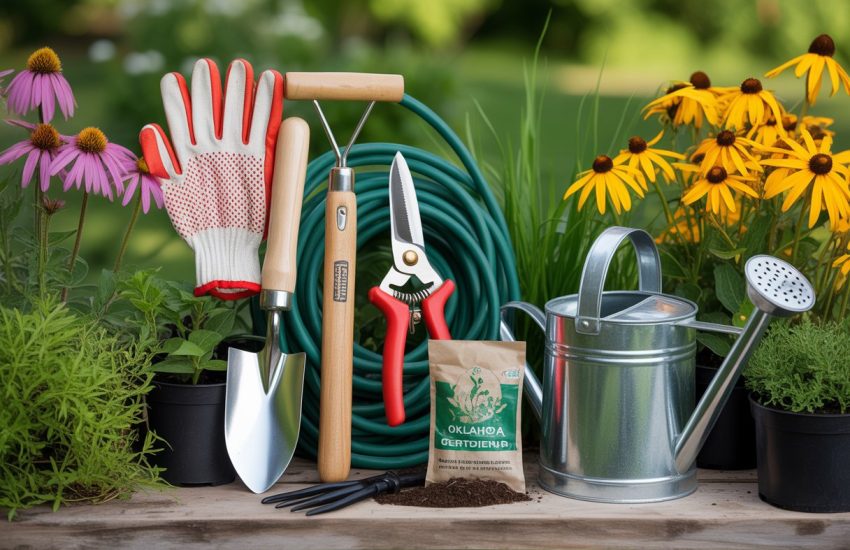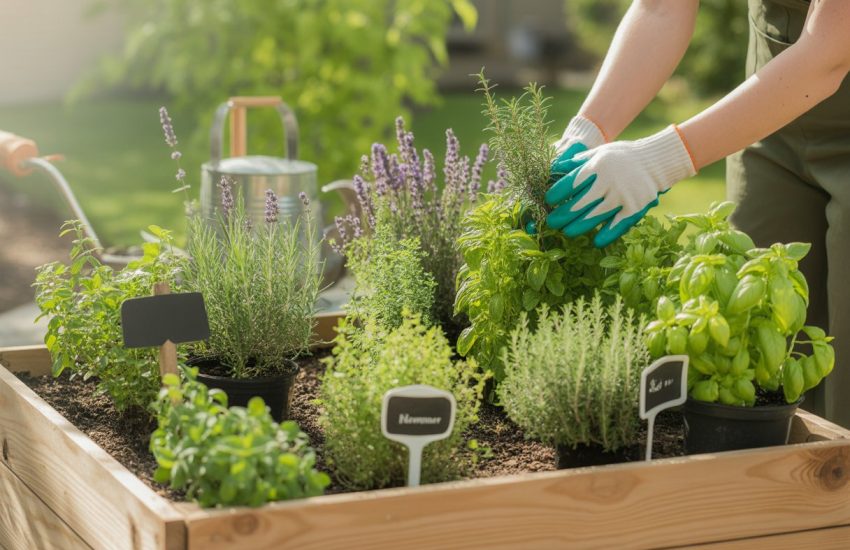Causes And Solutions For Petunia Leaves Turning Yellow
Petunias are pretty little flowers which are versatile in color, easy to take care of, and a delight to look at when planted in the garden or even in a flower pot. The flowers are considered as annual plants and they perform steadily in the summer.
Even though petunias are planted annually; making it easier to care for them, one of the main problems is the yellowing of their leaves.
Causes of yellowing of petunias leaves
There are several reasons that contribute to the yellowing of petunias leaves. The soil may be lacking some key nutrients such as manganese, iron, sulfur, magnesium, potassium, and nitrogen.

Petunias also require warm temperatures, bright sunlight, and well-drained soils for best performance. Lack of these ideal conditions may cause leaves to start turning yellow. Diseases which are either fungal or viral may also be responsible for the yellowing.
In some cases, pests such as aphids are responsible for transmitting viruses to petunias through their feeding activities.
Nutrient deficiency
Iron deficiency usually causes chlorosis in young petunia plants. A common indicator of chlorosis in petunias is the yellowing of the green leaves, while the leaf veins remain green.
Plants require iron for the formation of chlorophyll, for metabolism, for the formation of enzymes, and thus for photosynthesis and respiration. Iron deficiency impedes photosynthesis making it hard for plants to synthesize hormones and enzymes.
The following are some of the signs that may indicate iron deficiency in petunias:
- Stunted plant growth or growth disturbances
- Green plant veins while the leaves are turning yellow
- Young petunias leaves are affected
Diseases
The tobacco mosaic virus is one of the most probable causes of yellowing of petunias leaves. The virus is usually transmitted by aphids but tobacco users can also transmit it in soil using their hands.
There is no possible cure for your petunias once they get this virus, and thus you should throw them away. You should also avoid adding them to a composite site since they are hard to destroy using normal temperatures. This might cause them to spread in your garden further.
Your petunias may also be suffering from a fungal disease. This can be very noticeable in the summer because their leaves will not turn yellow but instead will turn brown and then black. Common fungal diseases include Verticillium wilt as well as root, stem and crown rot.
If the leaves of the plant are turning yellow from the bottom up, then this may be a sign that your plant is suffering from root rot. If you notice that there is rot or root damage in your potting soil, then you will want to make any corrections required as soon as possible.
Fungal infections are difficult to control and plants which are affected need to be removed and destroyed to avoid the disease spreading to healthy plants. Damaged plant parts should be pruned and burnt or be disposed of in a covered container.
Overwatering
When petunia plants get too much water, their leaves tend to turn yellow. These plants like humid conditions, but their petals and leaves are affected when they remain wet. Overwatering makes the leaves turn yellow and become wilted.
Pests
One of the most common petunia pests is aphids. They can spread the tobacco mosaic virus from plant to plant and when left untreated, they cause stunted, yellow leaves. A light infestation may be treated by dislodging the pests by spraying with a strong stream of water.
Solutions for yellowing of petunias leaves
Scaring off bugs and pests with insecticidal soap
Normally, insects like bees and ants tend to get stung by petunias plants and this turns them into quick-acting carriers of diseases, especially certain fungi. By spraying insecticidal soap on the leaves of your petunias, you can help prevent this from happening.
When applying insecticidal soap for petunias, spray your leaves once a week for three weeks. You can also spray it after blooming and/or during a period of drought. Make sure that you don’t use vegetables or fruit sprays as these can damage your plants instead of helping them.
Watering your petunias correctly
Humid conditions accelerate the spread of fungal diseases. To avoid this, petunias plants should be watered deeply; almost a depth of 6 inches, and the top 1 inch of soil should be let to dry off before watering again.
To keep foliage dry, you should water at the base of the plant. You should also avoid overcrowding the plants and provide sufficient air circulation. Petunias plants should always be planted in a well-drained soil, or in a pot that has a drainage hole at the bottom.
While a general rule is to water your plants once per week, some plants will require more watering throughout their lifetimes. Some plants, especially low-growing varieties, can dry out easily and risk dying if they receive less than a thorough soaking.
Many people use a soaker hose to water their plants. For most small gardens, this is just the right amount of watering. However, if you want to make sure that your plants stay green and healthy throughout the winter months, consider using a drip irrigation system. Drip irrigation will allow you to measure and water your plants with accuracy for when each plant needs water.
To prevent your plants from succumbing to water stress, place a water meter under your sink and attach it with a garden hose. This will help you determine how much water your plants require at different times of the year. Using this meter will also prevent over-watering of the house, causing mold or mildew in your pipes.
Using Citrus oils
One of the most effective ways of preventing your petunias from turning yellow is utilizing citrus oils on your plant leaves. These oils come in two forms- a flavoring oil and a seed oil.
The flavoring oil is made up of extracts of citrus fruits of all kinds, while the seed oil is made up of essential oils extracted from citrus peel, grapefruit peel, lemon peel, orange peel, bergamot and others.
Like insecticidal soap, citrus oils are natural pesticides. Citrus oils are usually food grade and hence you can safely spray them on your petunias to keep insects away. Citrus oil is also less toxic than most pesticides, but as with all chemicals, it is a good idea to keep your pets and children away from the sprayed leaves.
Citrus oils can be sprayed directly on the leaves to keep insects away. Spray 2-3 times a week for a month to prevent pests from damaging your plants. It is important to be careful and fully cover your plant’s leaves with citrus oil. Don’t spray until the leaves are soaked, but just enough so that it can spread to all areas easily.
Make sure that the citrus oil you are using is food grade by checking the label. You can also spray on your plant with a cotton ball or cloth dipped in the citrus oil to avoid direct contact with your petunias’ leaves.
Optimizing the soil’s pH
Tap water is usually responsible for the change in pH value of the soil since it contains a lot of lime. When pH changes, there are several nutrients which cannot be absorbed, e.g. iron when the pH is too high.
pH is used to identify the concentration of hydrogen ions in the soil. Therefore, when more hydrogen ions are in the soil, the more acidic the solution will be. Basic terms which are associated with pH include neutral, alkaline, basic, and acidic.
- Soil is regarded as acidic when the pH value is below 6
- Soil is regarded as neutral when it has a pH value of 6 – 7.5
- Alkaline and basic refer to the same thing, normally a pH value of above 7.5
pH of the soil is crucial for the availability of nutrient salts for plants. Most plants have an optimum pH ranging from 5.5 to 6.5. Extremely low or high pH levels result in a fixture of nutrients in the soil making them unavailable to plants.
A decrease in pH can cause a deficiency in molybdenum or magnesium, whereas an elevated pH can result in a deficiency in iron or phosphorus.
If your tap water is rich in lime, it is best to water your petunias using rainwater. A loose and nutrient-rich substrate should also be used when planting petunias, to give them a strong start. In cases where symptoms of chlorosis are evident in petunias growing in a container, repotting in fresh soil might be the best option.
Fertilize your petunias
There are special petunia and surfing fertilizers you can use to treat your petunias. NPK fertilizers consist of nitrogen, potassium, and phosphorus, along with iron, which are essential for the healthy growth of your flowers.
Depending on the fertilizers being used, petunias fertilizers can be applied regularly. This is also a good method of preventing deficiency symptoms. Foliar fertilization is also an efficient technique of combating iron deficiency since petunias absorb iron through the leaves and roots.
In these fertilizers, nitrogen is used to support growth of petunias. When spraying the leaves using iron fertilizers, direct contact with sunlight should always be avoided. As such, applying the fertilizers in the evening is recommended.
Another reason why foliar fertilizers are preferred is because they cannot be washed out as you are watering your petunias.
You need to use a balanced fertilizer and fertilize your petunias every 2 to 3 weeks. In the case of container-grown petunias, it is best to use a time-release fertilizer. However, spreading ones require fertilization often.
Avoid overfertilization
There is the risk of petunias being over fertilized. Similar to under fertilizing, the same symptoms can be observed in a case of overfertilization. The plant leaves will wilt and turn yellow. Using a fertilizer with too much nitrogen not only causes petunias to turn yellow, but they are also unable to flower.
In case you suspect that you have over-fertilized, you should avoid using the fertilizer with immediate effect until the plants are healthy again.
Petunias should also be watered deeply, with the soil being soaked down to the first 3 to 4 inches. If the petunias have been planted in a container, they should be watered liberally until water pours out of their drainage holes. This removes excess fertilizer and enables the plant to recover.
Using rock flours
Another great way of compensation for iron deficiency in the soil is using rock flours. To achieve the best results, rock flours should be brought in when you are planting your petunias to provide them with nutrients right from the beginning.
Using Mulch
A mulch is also a great way of preventing petunias from turning yellow. Mulches are a great option because they trap the moisture within the soil, which prevents them from drying out and withering away.
This can be done by simply applying leaves that have been cut up or shredded to your petunias. The dark colored leaves will absorb all of the sunlight so the plants can grow and thrive within their soil.
Conclusion
Petunias are beautiful flowers that can produce an abundance of bright, eye-catching blooms. They are easy to manage and a good addition to a garden or a container garden. However, one of the most prevalent problems they face is yellowing of their leaves.
This may be due to conditions such as pest infestation or iron deficiency. Viral diseases; such as tobacco mosaic or fungal diseases may also cause yellowing of leaves.
Many plants will simply give up and die if they aren’t properly taken care of or if they are exposed to the elements. Remember that most annuals, including petunias, need plenty of water and well-draining soil.
Ensure that you are taking the appropriate precautions against pests and disease to ensure that you aren’t over- or under-watering your plants.


